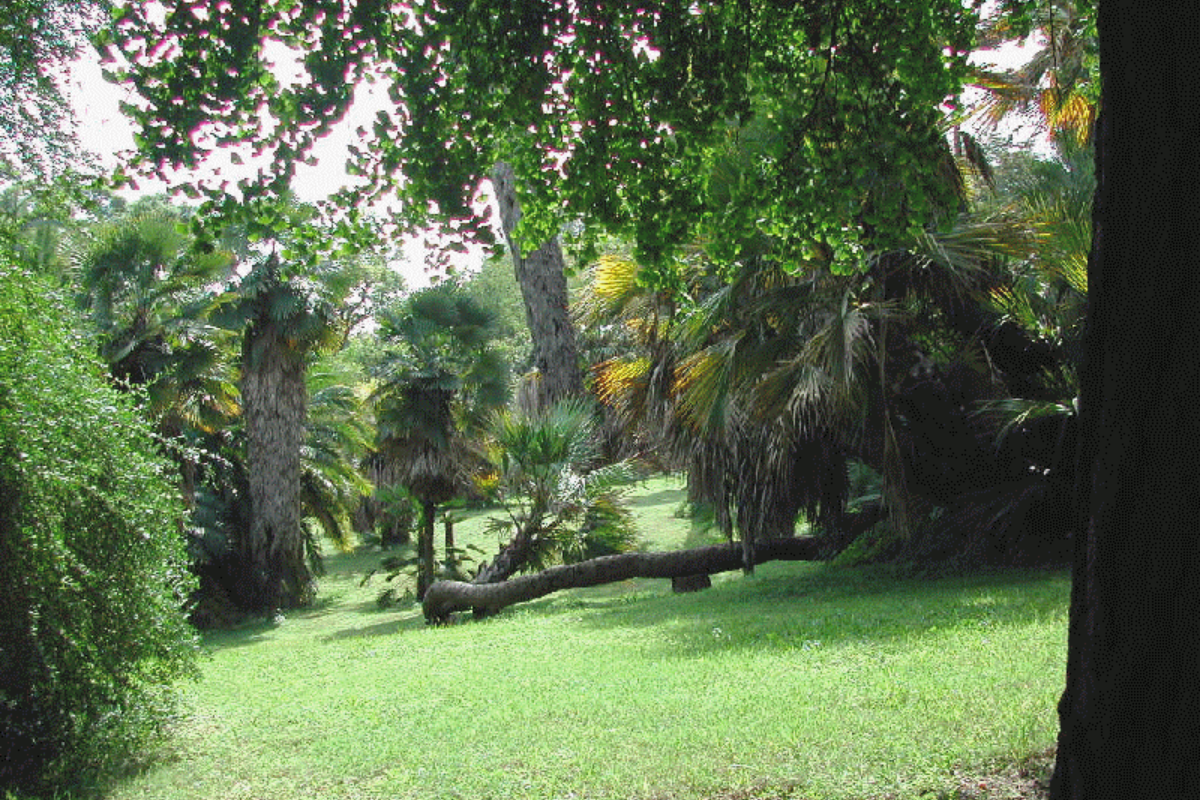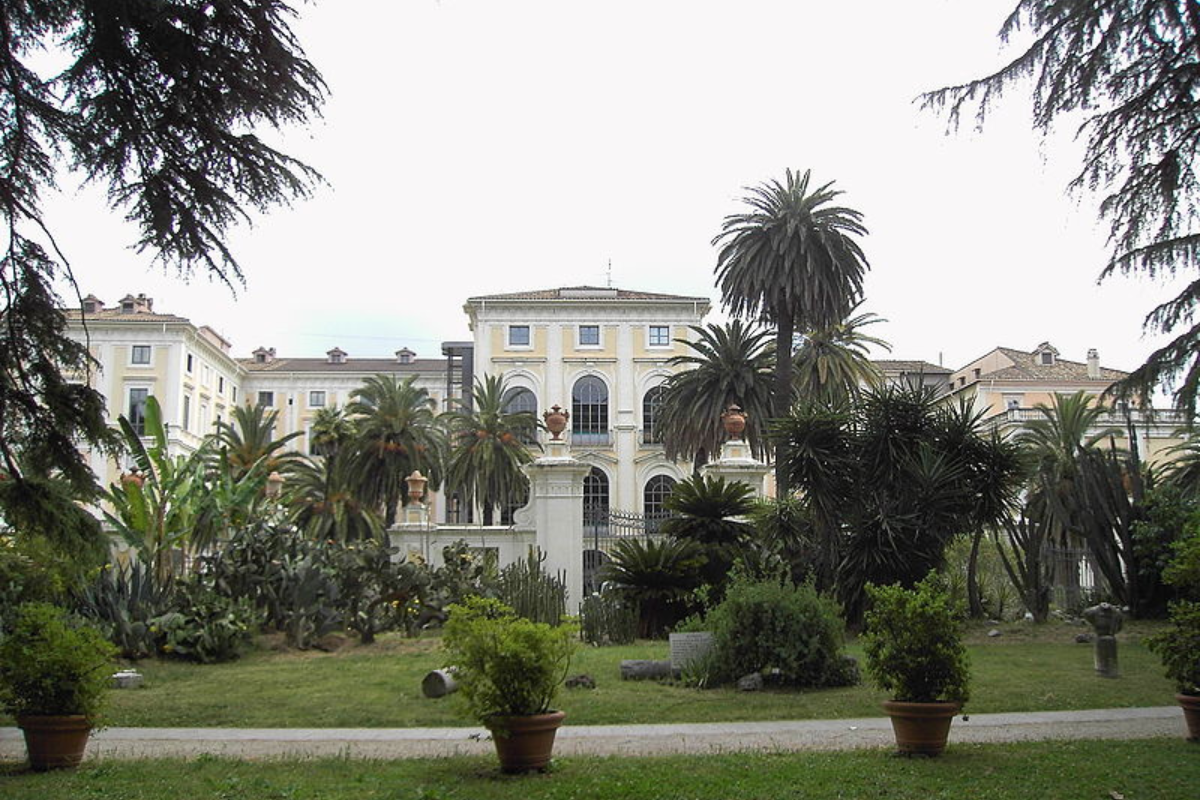The Botanical Garden of Rome is one of the most important green oases in Italy and is located on the slopes of the Gianicolo, in Villa Corsini. But let’s see some useful information.
L’Botanical Garden of Rome It is one of the most important in Italy, it is located at slopes of the Janiculumin the park of Villa Corsini, once the residence of Christina of Sweden. Today it is managed by the Department of Environmental Biology of the University of Rome “La Sapienza” and boasts 3000 plant species.
Let’s look together at the history, how to get there, what to see and the prices of the botanical garden of Rome.
The Botanical Garden of Rome, the history
The botanical garden of Rome has a very long history, its ancestor is the Simpliciarius Pontificius Vaticanus, the garden of simples where medicinal plants were grown. It was Alessandro VI to want the first real Botanical Garden in Rome, Pius V then he enlarged it and entrusted it to the botanist Michael Markets.
In 1513 the first chair of Botany at La Sapienza University and students had the privilege of visiting theVatican Botanical Gardenwhich remained private and therefore not visitable, allowing one to touch the studied species with one’s own hands.
Only after theunification of Italy, in 1883the Botanical Garden became what we know today; Villa Corsini, in fact, was immediately purchased by the state and it was Pietro Protta who installed the first collections and for this reason he is considered to all intents and purposes the first director of the Botanical Garden Museum of Rome.
The Botanical Garden of Rome, opening hours, prices and duration of the visit
And March to October The botanical garden is open every day, including Sundays and holidays from 9:00 to 18:30yes November to February from Monday to Saturday from 9 to 17.30.
Guided tours, educational workshops and special events have dedicated times that can be found by visiting the official website.
How long does a visit to the botanical garden last?
A visit to the Botanical Garden Museum in Rome lasts about 90 minutes.
How much does a ticket to the Botanical Garden of Rome cost?
The ticket to visit the botanical garden costs:
- €8.00 from 12 to 65 years old,
- €4.00 from 6 to 11 years old and people over 65 years old
- For children aged 0 to 5, other categories and their companions, teachers accompanying school groups, admission is free.
At the moment, reservations are not required, you can go every day and visit the park freely.
You cannot bring your pet with you because it is not permitted.
How to get to the botanical garden of Rome
To reach thebotanical garden from the north (p. le Clodio, piazza Cavour) or from the south (p. le Ostiense, v.le Aventino): reach Ponte Sisto with bus lines 23 or 280, continue on foot along Via di Ponte Sisto, Via di S. Dorotea, Via di Porta Settimiana, Via Corsini.
From the centre (from behind Torre Argentina) about from the west (Monteverde, Trastevere station):
reach Piazza G. Belli with tram eight then continue on foot along Via della Lungaretta, Via della Scala, Via di Porta Settimiana, Via Corsini.
During special events and exhibitions, it is possible to access from the upper entrance at the Gianicolo promenade, near the intersection with Via del Parco di Villa Corsini
Where to park at the Botanical Garden of Rome?
The botanical garden does not have a dedicated parking lot for visitors, the advice is to look for parking on the Lungotevere or opt for the paid parking on Lungotevere della Farnesina, the underground paid parking lots of Gianicolo and Via Giulia.
What to do at the Botanical Garden of Rome
L‘Rome Botanical Garden It has educational, environmental education and scientific research functions and its visit is a fun and at the same time educational experience that allows you to stay in contact with nature and see the most diverse plant species.
His teaching vocation and research makes it the venue for numerous exhibitions, courses, symposiums and conferences dedicated to environmental and naturalistic themes.
There are several ways to visit it nature trails and educational workshopsin addition to guided tours to appreciate and explore numerous themes in the naturalistic field. Educational activities are open to schools and groups of any kind and are very intense.
They are well counted 250 guided tours organized in thematic itineraries
Guided tours of the botanical garden
Guided tours They last about 90 minutes and are intended for children aged 6 and over, the following thematic visits are currently available:
- Visit to the botanical garden
General visit of the entire botanical garden, on its history and purposes - The ultracentenary trees
- Medicinal plants
- Species at risk – IUCN and CITES
- The dyeing plants
- Living fossils
- Plants in myth
- Plants and musical instruments
- The diversity of plants
- Roses – April to May
- The Irises – May
Hanami at the Botanical Garden
On the occasion of the cherry blossom of the Japanese Garden – designed by architect Ken Nakajima, who also created the Institute’s garden Japanese Culture in Rome – which takes place in late spring, the Museo Orto Botanico in Rome organizes an event entitled «Hanami at the Botanical Garden», with a focus on the idea of Nature that permeates Japanese culture and defines its aesthetics.
The event is divided into two days, usually in April and includes conferences but also:
- Guided tours of the Japanese garden
- Meetings dedicated to the compositional style of the Japanese garden
- Tea ceremony by Urasenke Center

Botanical Garden of Rome, Dinosaurs Exhibition
One of the most famous and loved exhibitions organized in the botanical garden of Rome was the one dedicated to dinosaurs, which ended last April 3, 2022. An exhibition dedicated to dinosaurs born from the collaboration between the Museum of the Botanical Garden of Rome and the paleontological association APPI
The themed itinerary, which given the success of this edition could be repeated, allowed visitors to travel into the prehistoric world, with reconstructions of the Tyrannosaurus hey large mammals of glacial periods such as the mammoth and the giant deer.
Within this exhibition, some works were created workshops specific to the duration of one hour.
- THE JOB OF PALEONTOLOGIST
Target: Primary School (recommended for grades III, IV and V) and Lower Secondary School. - ONCE UPON A TIME IN PREHISTORY…
Target: Primary School (recommended for classes II, III, IV and V) and Lower Secondary School. - THE TIME CLOCK
Target: Primary School. - PRICE PUZZLE
Target: Nursery School and Primary School (recommended class I). - PALEOSHADOW
Target: Nursery School and Primary School (recommended class I). - COLOR PREHISTORY
Target: Nursery School and Primary School (recommended class I).

What to see at the botanical garden of Rome
The Botanical Garden of Rome, second in fame only to the Botanical Garden of Padua, extends over 12 hectares, on the slope of the Janiculum facing northeast. Irrigation and some streams with aquatic crops are fed by the Acqua Paola aqueduct.
The garden currently hosts over 3000 plant species.
In the lower part you will find:
- garden of simples and garden of aromas;
- palme;
- aquatic plants;
- greenhouses and succulent plant collections;
- bamboo groves, fern valley.
At the top of the hill we find a Mediterranean forest with evergreens, an area called Bosco Romano, where you can enjoy breathtaking views of the city, among the centuries-old specimens of holm oaks and plane trees 350 – 400 years old.
Below, in the direction of the palace, the collection of conifers has been installed; it is also possible to see an Australian Araucaria, an American giant sequoia, as well as at least four evergreen sequoias, a half Chinese sequoia, also called Water Fir and some Taxodium distichum, mucronatum and Mexican ones.
Also installed on the upper part are:
- the rose garden
- the Japanese garden.
Source: www.greenstyle.it


